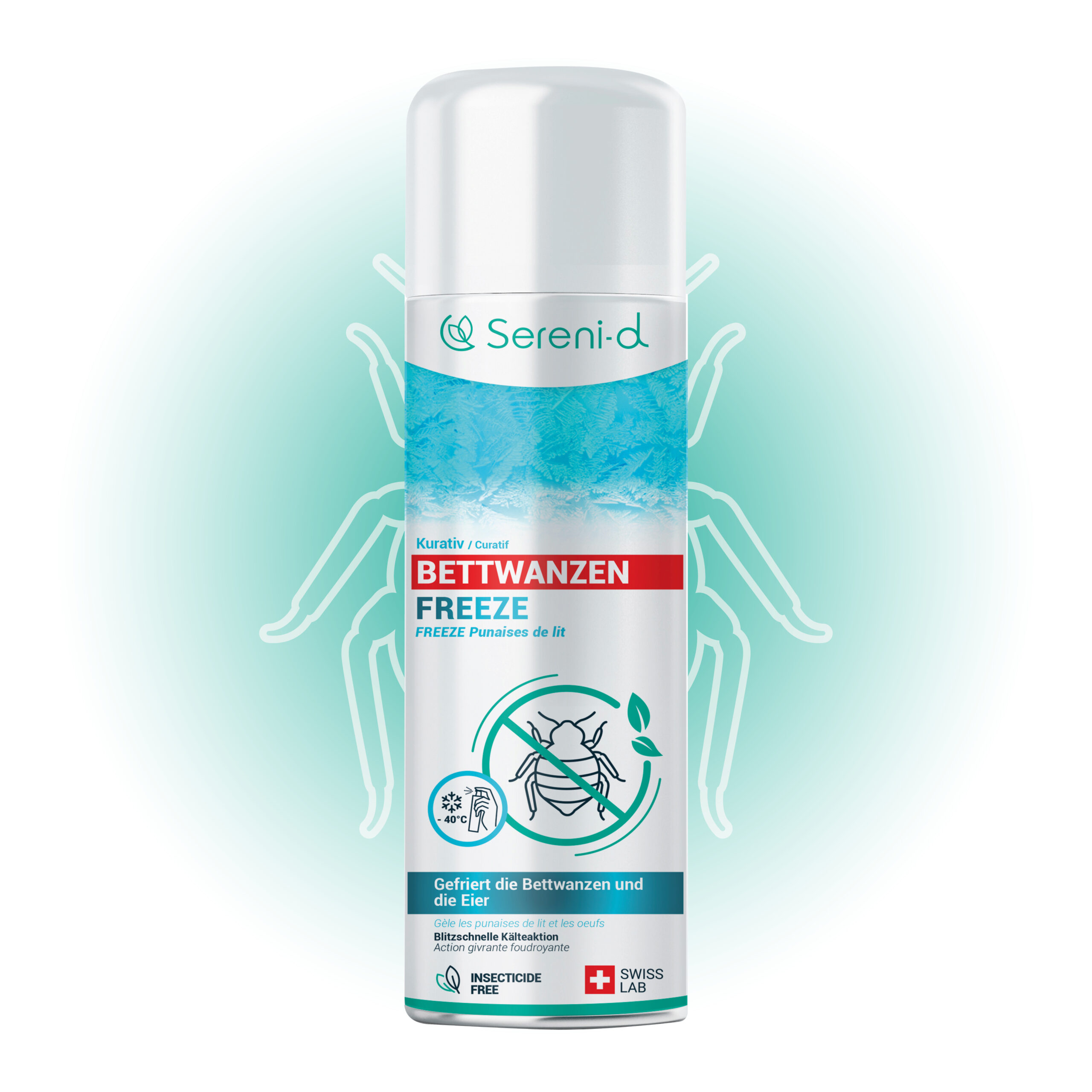Have you noticed small translucent or whitish larvae in your home? If they are bed bug larvae, sound the alarm! They indicate that an infestation is underway. How can you identify this type of larva? What are the best practices and effective treatments? Here is all the advice from Sereni-d.
Bed bug larvae: key information
- The term ‘bed bug larva’ is a linguistic flaw. In reality, we should be talking about nymphs.
- Bed bugs are insects with incomplete metamorphosis involving three main stages: egg, nymph and adult.
- Nymphs resemble adult bedbugs, unlike the larvae of insects with complete metamorphosis such as butterflies (caterpillars and chrysalises do not resemble butterflies).
- Identification of larvae/nymphs: Small (1 to 4 mm), whitish, oval, visible to the naked eye, hidden in mattress seams and cracks in furniture.
- Life cycle: eggs, nymphs in 5 stages, adult bedbug
- Where to find them: Bedding, furniture, cracks, skirting boards, electrical sockets, luggage and clothing.
- How to eliminate them: Vacuum cleaner, steam at 120°C, washing at 60°C, freezing at -20°C, diatomaceous earth.
How can I recognise bed bug larvae?
Bed bug larvae are the first visible sign of an infestation. Unlike adults, they are more difficult to spot because of their tiny size.

Size and appearance of the larvae/nymphs
- Small size: Approximately 1 mm at hatching and up to 4 mm before they moult into the adult stage.
- Oval and elongated shape.
- Translucent colour, which becomes darker after their first blood meal.
- Soft and fragile body, unlike adults, which have a more rigid shell.
Difference with other insects
Bed bug larvae are sometimes confused with other pests.
Here are a few tips to help you avoid mistakes:
| Insects | Larvae appearance |
|---|---|
| Flea larvae | Very difficult to see with the naked eye. They are 0.5 mm long, white and oval. Present on animals. |
| Dust mites | Dust mites are microscopic and cannot be seen with the naked eye. |
| Moth larvae | Larger, measuring up to 12 mm, and found in clothing or food. |
Life cycle of bed bugs: difference between larvae, nymphs and adults
Understanding the different stages of the life cycle of bed bugs allows you to react effectively. The ‘Cimex lectularius’ goes through several stages of development: eggs, five immature stages (nymphs) and then adult.
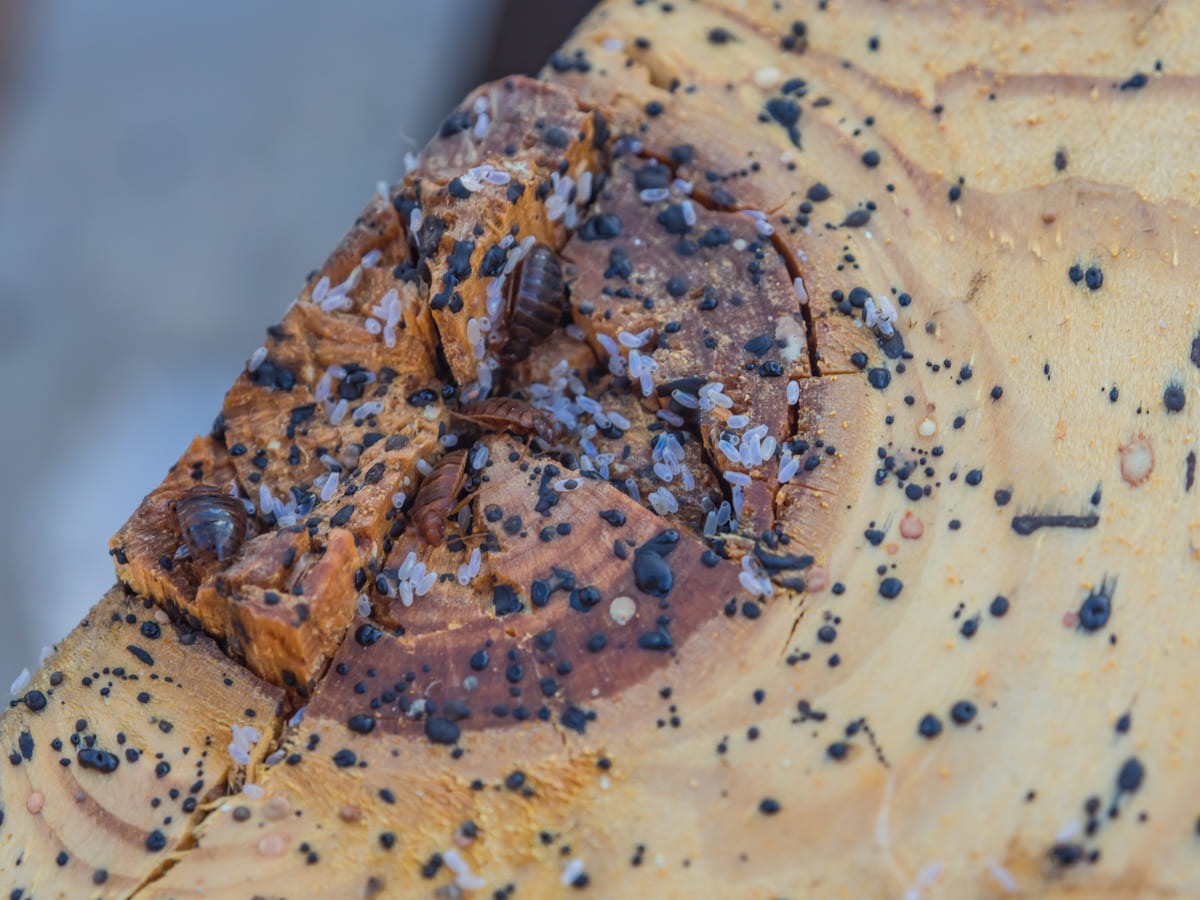
1. Bed bug eggs
- Size: Approximately 1 mm when hatched, almost invisible to the naked eye.
- Colour: Whitish, translucent, making them difficult to spot.
- Appearance: Resemble a grain of sticky rice.
They are mainly found in mattress seams, furniture cracks, behind skirting boards and in dark places.
A female can lay up to 5 eggs per day and around 500 in her lifetime.
2. Bed bug nymphs
As soon as the egg hatches, it becomes a nymph. This is the stage of immature development or ‘juvenile stage’, which takes place in 5 phases. It is from the immature stage that the bed bug needs to feed on blood to gradually progress to its adult phase.
- Size: 1.5 mm to 4 mm, growing progressively after each meal.
- Colour: Darker than the larvae, becoming light brown as they develop.
- Appearance: Resemble the adult, with the same number of legs and the same shape.
They moult five times before reaching adulthood, requiring a blood meal at each moult:
- 1st nymph stage (1.5 mm)
- 2nd nymph stage (2 mm)
- 3rd nymph stage (2.5 mm)
- 4th nymph stage (3 mm)
- 5th nymph stage (4.5 mm)
The term ‘bed bug larva’ is a linguistic flaw. A larva is used for insects in which the immature stage does not resemble the adult (such as butterflies). For bed bugs, we speak of ‘nymphs’, because the immature stages resemble the adult form.
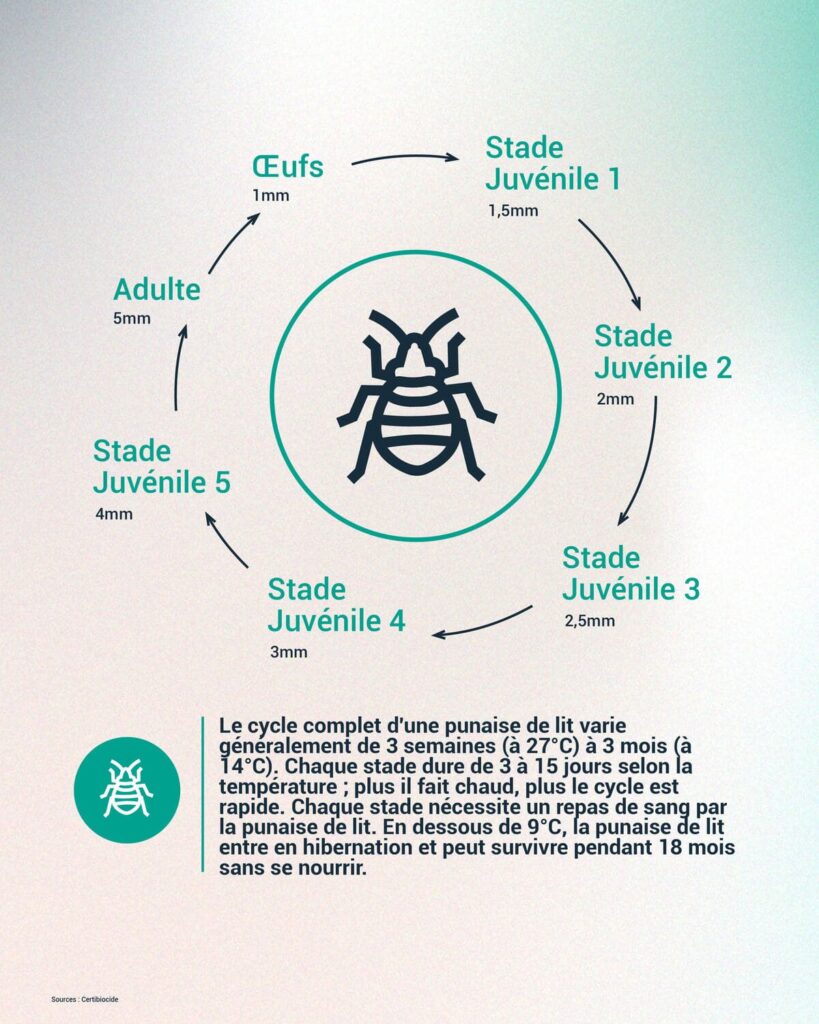
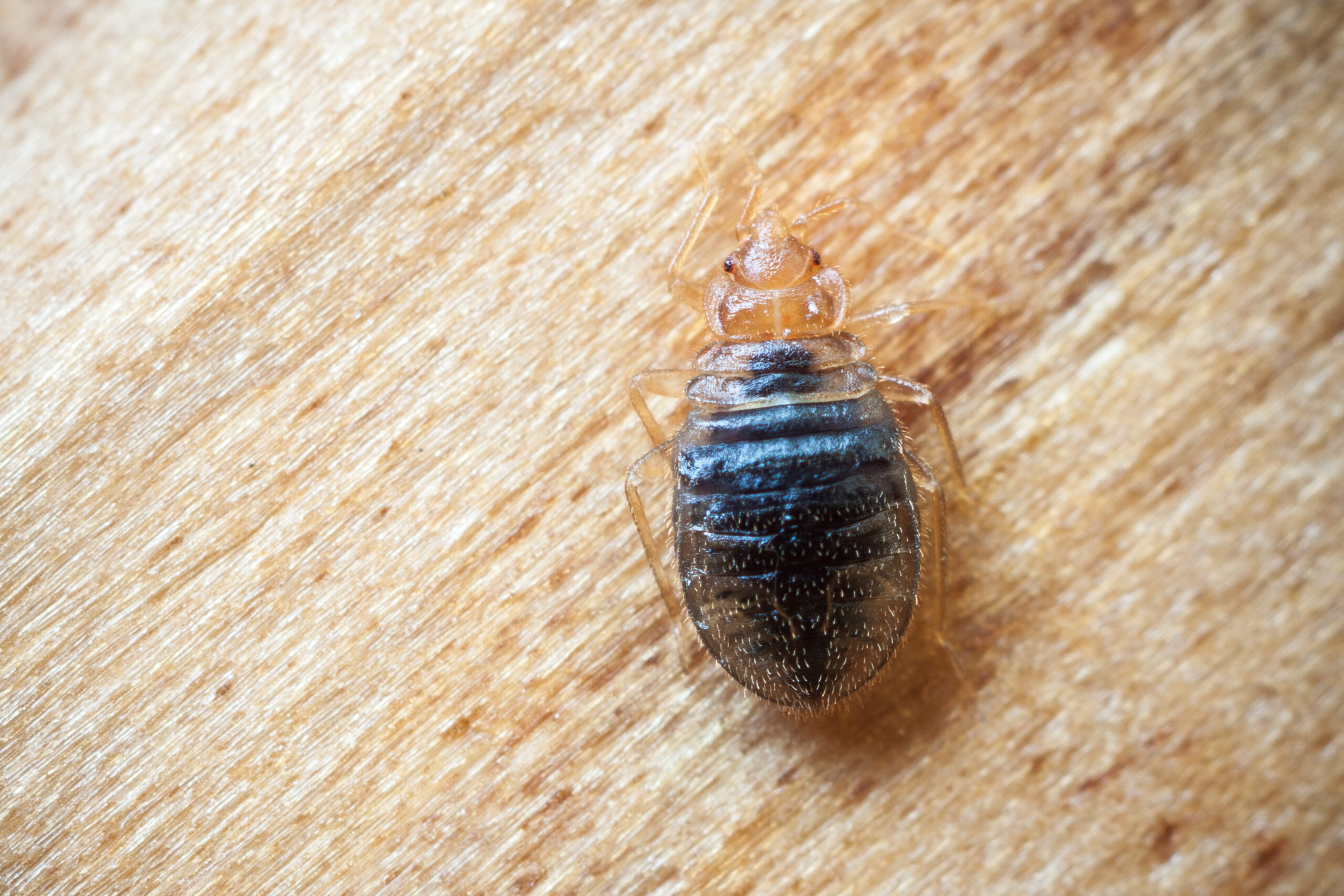
3. Adult bed bugs
- Size: Approximately 5 to 7 mm, visible to the naked eye.
- Colour: Reddish brown and darker than nymphs.
- Appearance: Oval and flattened when hungry, but can swell after a meal.
- Reproduction: An adult female lays up to 5 eggs a day and more than 500 in her lifetime, accelerating proliferation in a few weeks.
How quickly can an infestation develop?
The higher the temperature, the faster the bugs develop.
- At 28°C, a larva becomes an adult in 45 days.
- At 18°C, the cycle lasts about 100 days.
- At 13°C, it takes almost 5 months to reach the adult stage.
Where do we find the larvae of bed bugs?
The larvae of bed bugs remain discreet and hidden in dark and difficult to access places. Unlike adults, they do not travel far and remain close to their main food source: humans.
1. Bedding
- Seams and folds in mattresses: larvae like to lodge in the nooks and crannies of mattresses and box springs.
- Gaps in box springs: they hide under the slats or in the cracks in the wood.
- Pillows and sheets: they sometimes leave traces of blood and black excrement visible on the bed linen.
- Headboards and bed frames: they find refuge in the cracks of the wood or behind the padded structures.
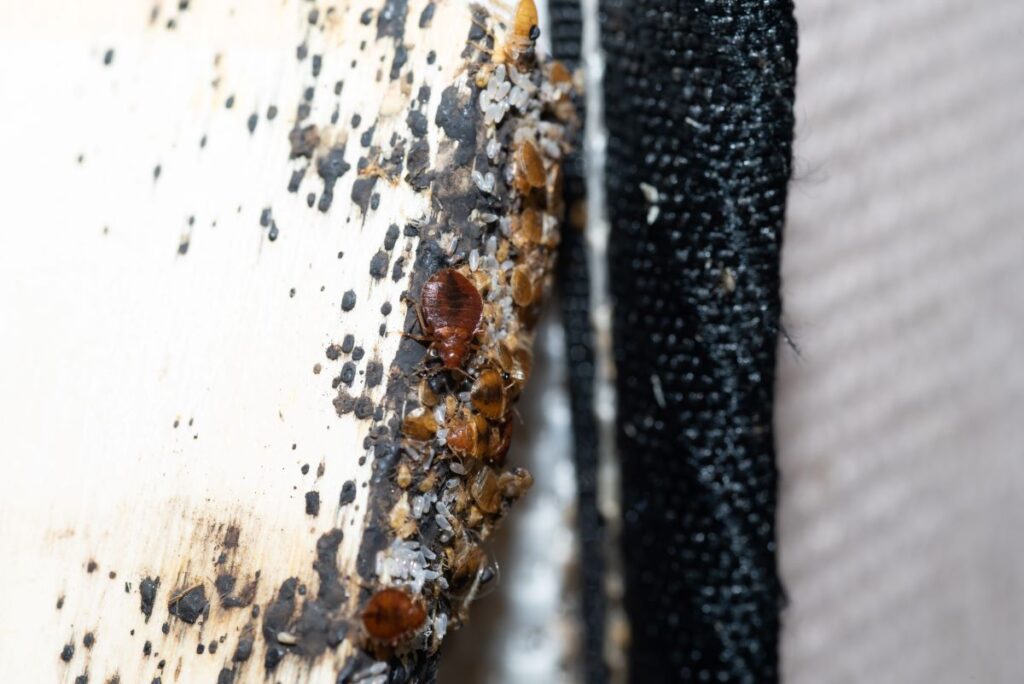
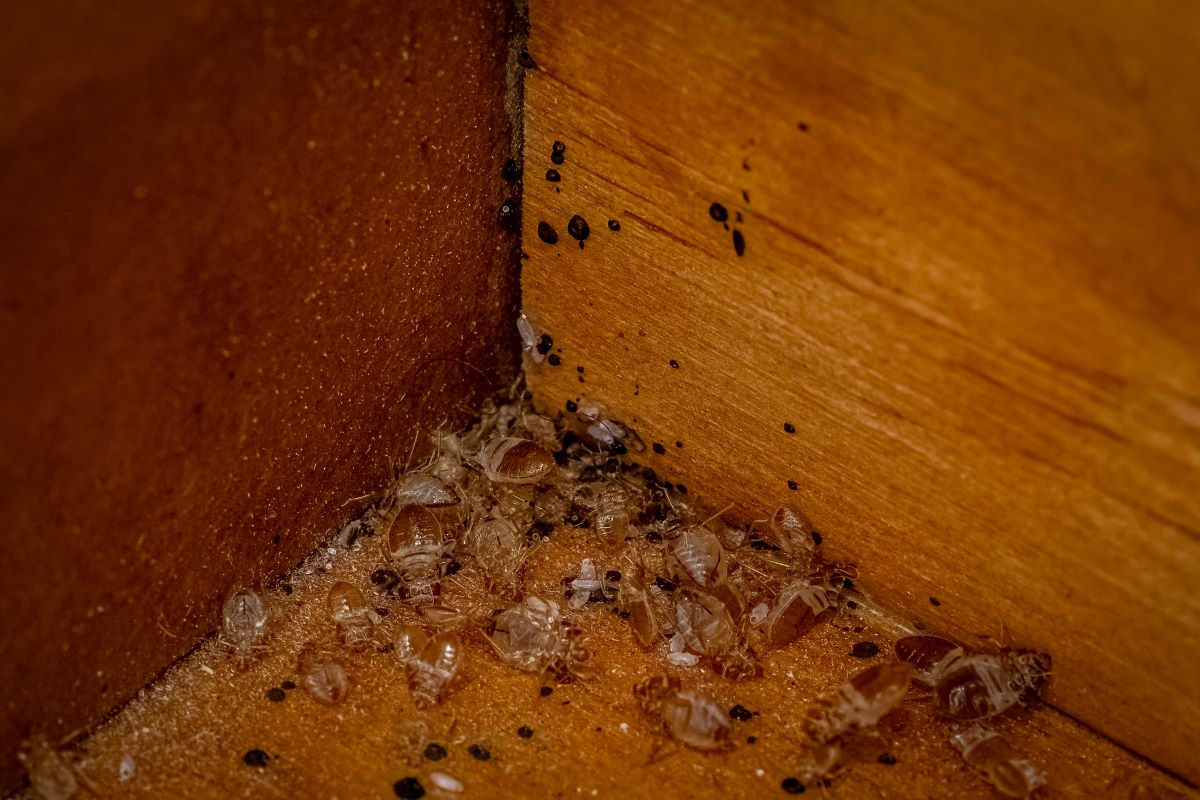
2. Furniture and objects near the bed
- Bedside tables and chests of drawers: larvae infiltrate the drawers or under the furniture.
- Sofas and armchairs: they lodge in the seams and under the cushions.
- Curtains and carpets: they like thick fabrics where they can hide.
- Electrical sockets and cracks in walls: the larvae can also infiltrate dark and inaccessible corners.
3. Clothing and luggage
- Bed linen and clothes: they can cling to fabrics and move with them.
- Luggage and travel bags: a frequent source of contamination after a stay in a hotel infested with bed bugs.
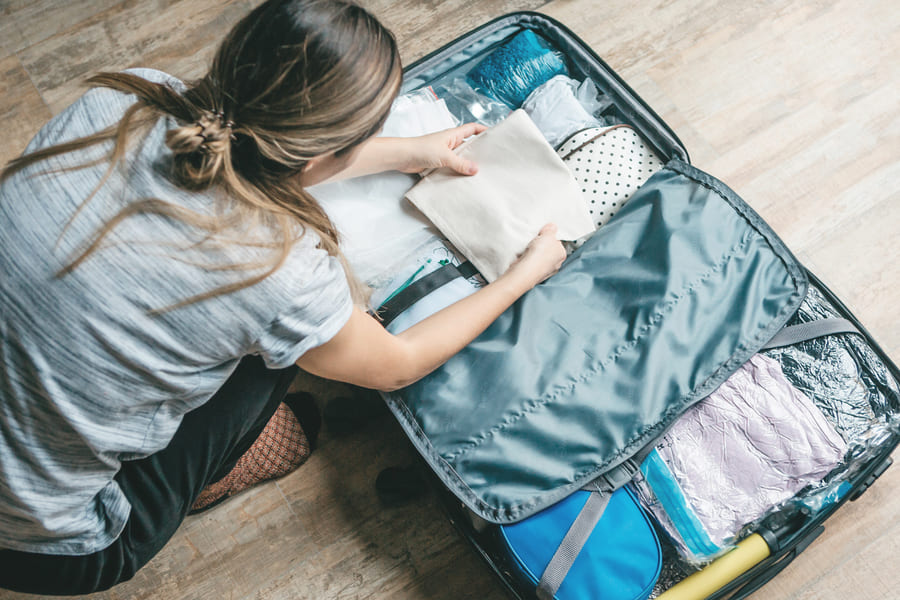
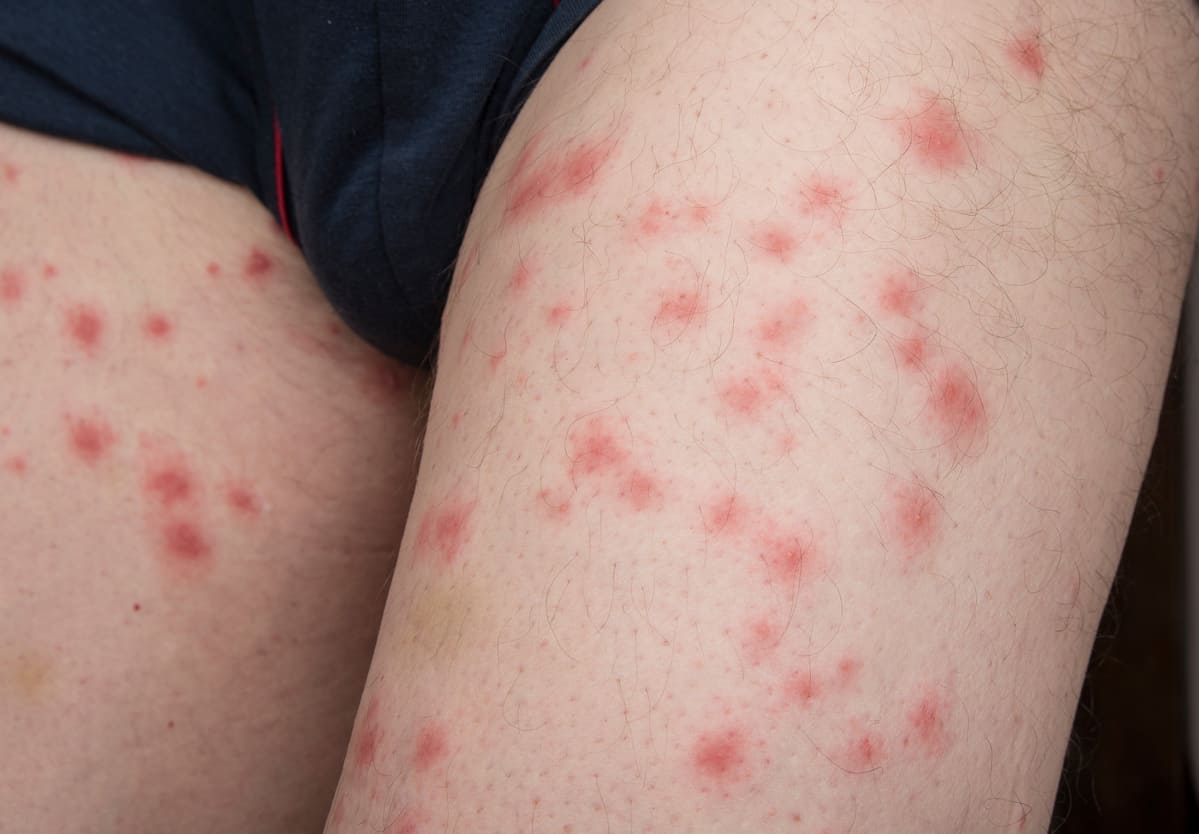
Other signs of infestation
In addition to the larvae, there are several signs that may confirm the presence of bed bugs in your home:
- Traces of bites: red bumps grouped in a line or cluster, often on the arms, legs and back.
- Black spots on the mattress and sheets: these are excrement left by the bedbugs.
- Presence of exuviae: the transparent moults of nymphs are often visible near hiding places.
- Unusual odour: an advanced infestation can give off a sweet or musty odour.
➡️ To find out more, you can consult the different levels of infestation established by the INELP. In addition, canine detection is very effective in detecting bed bugs.
How to kill bed bug larvae?
If you spot bed bug larvae in your home, you must act immediately to prevent them from becoming adults and reproducing. We recommend that you combine the following methods:
Mechanical and preventive treatments
- Vacuum clean: Pay particular attention to cracks in furniture, mattress seams, bed bases and dark corners. Dispose of the bag immediately or empty the bin into a sealed bag, which you should then place in an outside bin.
- Wash infested laundry: All exposed textiles (sheets, clothes, curtains) should be machine washed at 60°C, then tumble dried on high.
- Use a steam cleaner: Dry steam at 120°C kills larvae, nymphs and eggs instantly, especially in mattresses, box springs and wall cracks. Steam works up to 5 cm away, beyond that it is not effective.
➡️ See also: Bed bug traps.

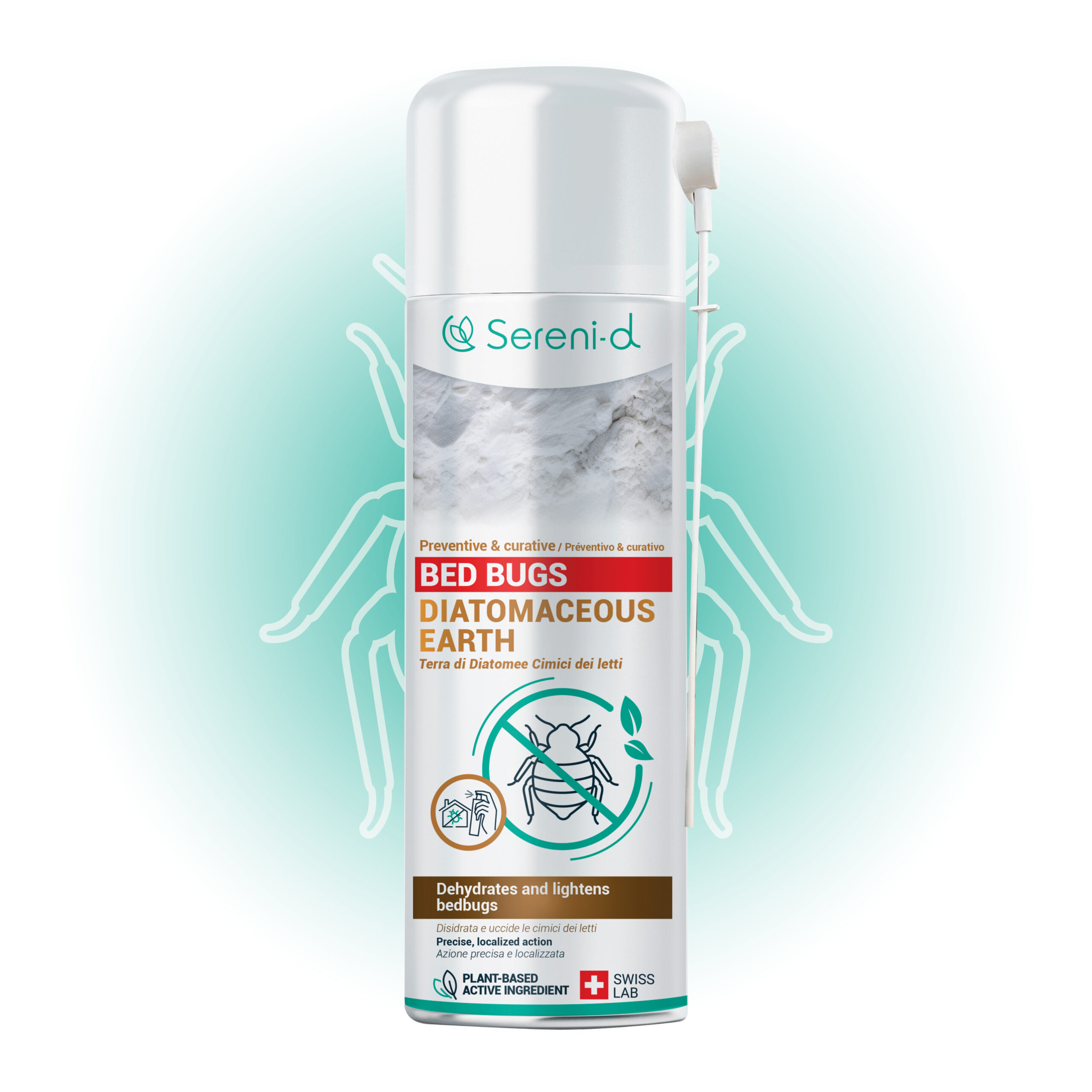
Chemical treatments and insecticides
The diatomaceous earth SERENID: This natural product has a cutting action that dries out larvae and adults in 4 to 5 days. Apply it in corners, along baseboards and behind electrical outlets.
Thermal treatments
- Cold treatment: Place infested textiles and small objects in the freezer at -20°C for at least 72 hours to kill the larvae and eggs.
➡️ To go further: The complete protocol against bed bugs.
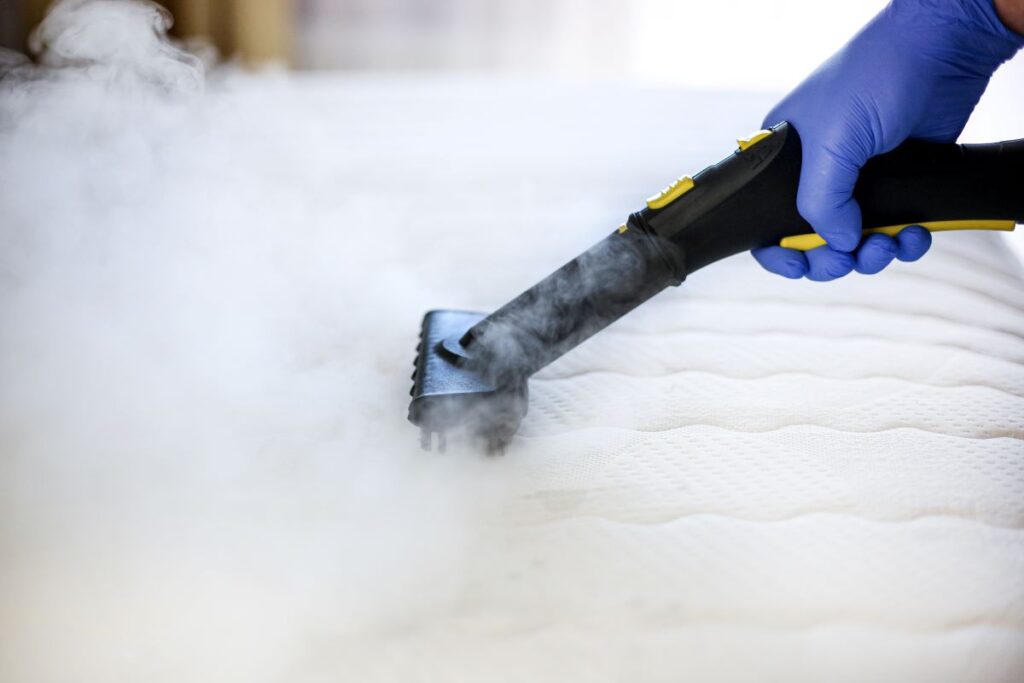
How can I avoid another infestation?
The best solution against bedbugs is prevention.
Here are some good practices:
- Avoid buying second-hand furniture without disinfecting it.
- Check your bedding regularly (seams, bed base, mattress).
- Apply diatomaceous earth behind electrical sockets, under the bed and along skirting boards.
- When travelling, store your suitcase high up.
➡️ Find out all the information about bed bugs in an Airbnb.

